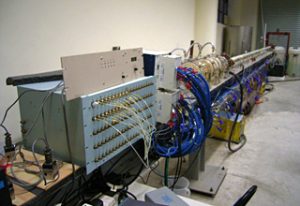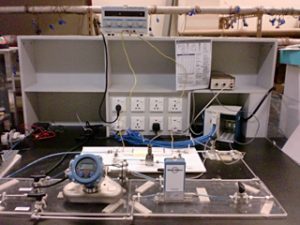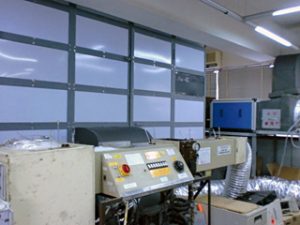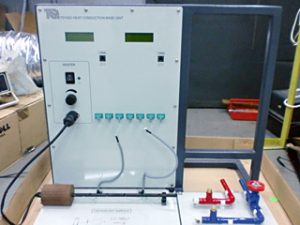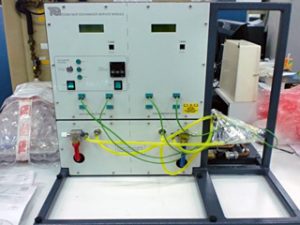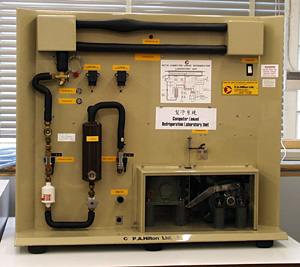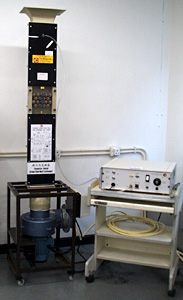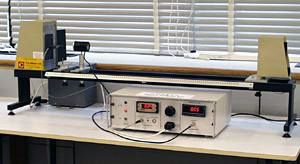| Location | E11-G027a |
| Academic Staff in charge | Prof. Lap Mou TAM |
| Technician | Hou Kuan TAM; Cheong SUN (TA) |
| Telephone | (853) 8822-4289 |
| Open Access Reservation Period | Monday: 10:00 – 12:00, 15:00 – 17:00 Tuesday: 10:00 – 12:00, 15:00 – 17:00 |
Objective
The objective of the thermal engineering laboratory is to introduce the student the fundamental theories and the industrial applications of thermodynamics, heat transfer, and fluid mechanics. This laboratory supports the courses for the undergraduate and graduate studies. Moreover, this laboratory also supports the advanced research in the area of thermal engineering, heat transfer, and fluid mechanics.
Facilities
Experiments
For Experimental System for Macro-Scale Heat Transfer and Pressure Drop Measurement:
- Demonstration of Heat Transfer and Pressure Drop Measurement Inside Macro-Tube
- Investigation of the Variation in Heat Transfer and Pressure Drop for Various Tubes and Inlet Configurations
- Determination of the Heat Transfer Coefficient and Friction Factor
- Analysis of the Transitional Behavior inside Macro-Tube
For Experimental System for Micro-Scale Heat Transfer and Pressure Drop Measurement:
- Demonstration of Heat Transfer and Pressure Drop Measurement Inside Micro-Tube
- Investigation of the Variation in Heat Transfer and Pressure Drop for Various Tube Size and Surface Roughness
- Determination of the Heat Transfer Coefficient and Friction Factor
- Analysis of the Transitional Behavior inside Micro-Tube
For Air Conditioning Experimental Chamber:
- Demonstration of Air Conditioning Process
- Investigation of the ‘IAQ’ and heat transfer problems for Various Environmental Conditions
- Investigation of the ‘IAQ’ heat transfer problems for Various In/Outlet Conditions
- Flow Field and Heat Transfer Analysis
For Heat Conduction Laboratory Unit:
- Demonstration and calculations of Linear Heat Conduction
- Demonstration and calculations of Radial Heat Conduction
- Demonstration and calculations of Surface Heat Transfer (conduction, convection and radiation)
- Demonstration and calculations of Heat Conduction through liquids and gasses
- Calculation of the thermal conductivity (k value)
- Demonstration of the effectiveness of thermal paste
- Demonstration and calculations of thermal resistances (R value) in series
- Demonstration of ‘thermal lag’
For Heat Exchanger Laboratory Unit:
- Demonstration of heat transfer from one fluid to another through a solid wall
- Energy balance and efficiency calculations
- Comparison of different types of heat exchanger in terms of performance, size and relative cost
- Demonstration of Parallel-flow and Counter-flow operation of the heat exchangers
- Measurement of the heat transfer coefficient, and the effect of fluid flow rates and the driving force (temperature differential) upon it
- Introduction to the logarithmic mean temperature difference in heat exchangers
- Flow-through and batch heating, with or without stirring, using a heating jacket or a coil
For Computer Linked Refrigeration Laboratory Unit:
- Demonstration of the Vapor Compression Refrigeration Cycle, and production of the cycle diagram under various conditions
- Investigation of the variation in Refrigerator ‘Duty’ for various Condensing Temperatures
- Investigation of Coefficient of Performance based on Electrical, Shaft and Indicated Power for various Evaporating Temperatures
- Investigation of System Parameters under Transient Conditions
For Computer Linked Cross Flow Heat Exchanger:
- Steady State Determination of Heat Transfer Temperature Difference and Surface Heat Transfer Coefficient for a Single Tube in a Transversely Flowing Air Stream
- Deduction of the Relationship between Nu, Re and Pr Numbers for Each of the Six Tube Rows
- Steady State Determination of the Mean Surface Heat Transfer Coefficient for Tubes
For Thermal Radiation Unit:
- Measurement of Emissivity
- Lambert’s Cosine Law and Lambert’s Law of Absorption
Courses supported
| EMEB211 | Thermodynamics |
| EMEB320 | Heat Transfer |
| EMEB352 | Air Conditioning & Refrigeration |
| ELME707 | Process Heat Transfer |
| ELME708 | Convective Heat Transfer |


